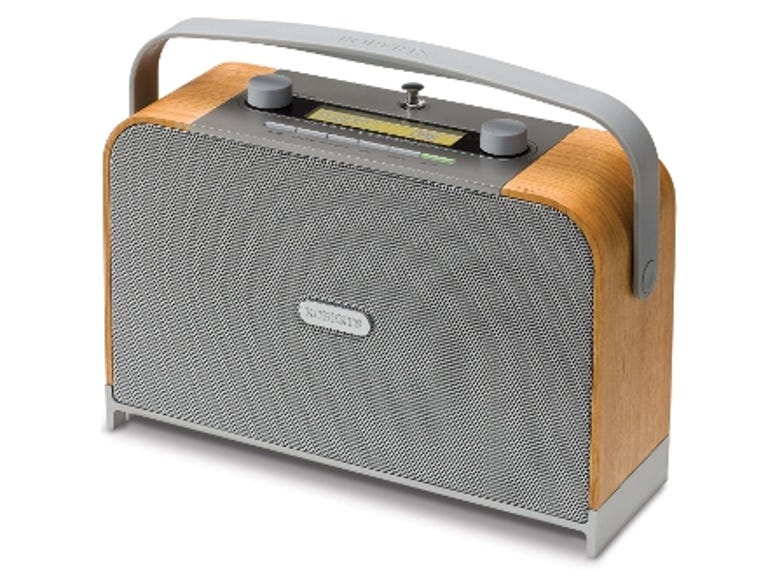 Why You Can Trust CNET
Why You Can Trust CNET Roberts Expression review: Roberts Expression
The Roberts Expression is a great-sounding radio in a cool, understated case that looks good. The company's trademark use of unlimited presets and a shortcut Favourite button are welcome diversions from the industry norm.
It's refreshing to come across a digital radio that focuses on the essentials: great sound, good looks and a strong tuner. With the Roberts Expression, there's no media streaming, iPod dock or Internet tuner on offer, just a pared down radio that sounds as good as it looks. At under £100 it's hardly an impulse purchase, but it is a style statement within reach of most shoppers.
The Good
The Bad
The Bottom Line
Priceless expression
It could have been sketched for the art deco generation in Roberts' earliest years -- the 1930s -- or it could have popped up in Ikea mere days ago. The case is curved ash; the front and rear are drilled metal grilles. The tuning and volume knobs, alongside the six buttons mounted on the top, are rubberised. The only thing that lets it down is the grey plastic handle that feels as cheap as it looks. It rotates 180 degrees from front to back of the case, where it rests uncomfortably on a power lead that protrudes from the rear like a tail.

You'd be forgiven for thinking we were so focused on its looks because it had nothing else to offer, but that's far from true. It's light on resources, running for 100 hours on a set of four alkaline D-cell batteries. If you'd rather use rechargeables, simply flip the selector to NiMH and fit them. The integrated charger will top them up when it's plugged into the mains so it should always ready for action should you want to move to another room.
Sound quality is excellent. Classical music is clear and balanced, with excellent definition across the spectrum. Pop and rock sound full and rounded, while spoken content is warm, personal and very human. This is thanks in no small part to the fact that the grille hides two speakers and the radio itself has a Dynamic Range Control setting, which uses supplementary information sent out by the broadcaster to enhance quieter sounds.
Touchy tuner
The DAB tuner is very sensitive, and even with the aerial fully retracted it picked up all of the stations available in our local area, and many beyond. On the one hand, this is a good thing -- keeping the aerial tucked away means it won't ever be harmed -- but we're disappointed that Roberts hasn't implemented a 'Prune' option like the one on Vita Audio's radios, to filter out stations that have a particularly high signal error count, even with the aerial extended.
The FM tuner's performance was less impressive. In a room with a couple of computers and a wireless router, the autotune feature -- which scans the dial and stops each time it encounters a station -- paused every few tenths of a frequency point, even if there was no station there in our test area. Adjusting its sensitivity didn't help, but moving the radio to another part of the house did, suggesting it was our tech set-up that was causing the problem. Bear this in mind if you plan on using the Expression in an office.
Favoured frequencies
Fortunately you should only need to scan each band once, after which you'll set the ones you want as presets -- effectively solving the above problem. You can save an unlimited number of presets for DAB and FM, with the two lists kept separate to avoid switching back and forth between the two bands. There are no numbered preset buttons, so scrolling through either band once they're set up shows just the presets, skipping every station or empty frequency between.
In common with other Roberts radios, including the ever-popular Roberts Revival line, the presets are supplemented by a Favourite button, which stores your most-used station. It's up to you which you choose, and you can pick from either DAB or FM but not both.
Conclusion
Our issue with the super-sensitive FM tuner aside, we were very impressed by the Roberts Expression. First it bowls you over with its clean good looks, and then you turn it on and realise what a good choice it was. With a great set of speakers behind that smart metal grille it's good enough to rival a mid-range hi-fi, easily filling the room with a rounded, warm and well-balanced sound that shows off whichever station you choose to best effect.
Edited by Jennifer Whitehead


